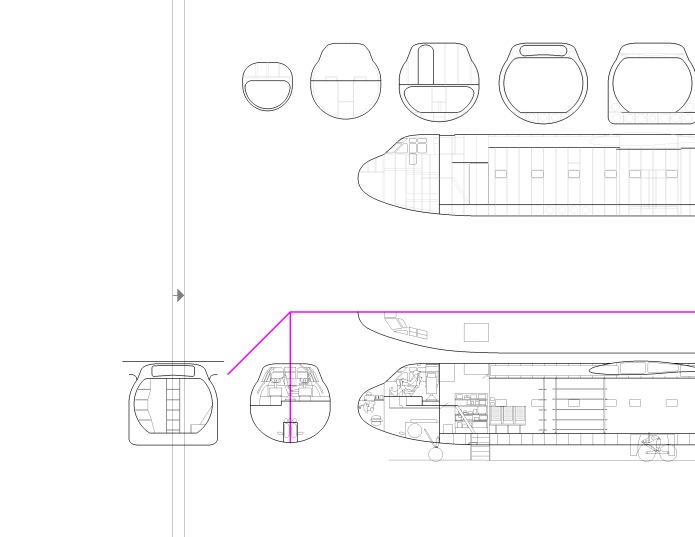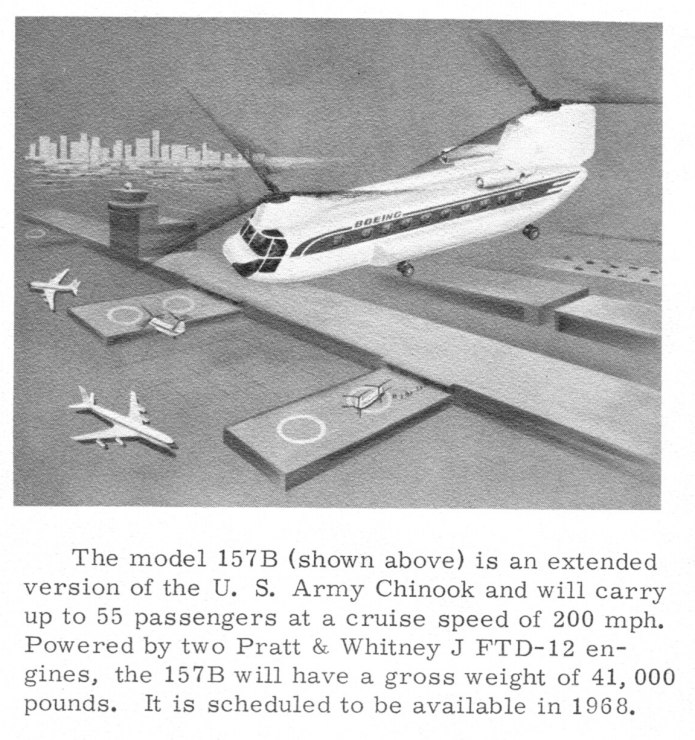The orbiter for the “DC-3” referenced previously. This vehicle had relatively small wings, leading to quite low crossrange. The wings were also simple straight wings, not highly swept deltas; the vehicle could get away with this because it did not “glide” during re-entry, but “belly flopped.” To aid in crossrange and landing, each wing would have a single turbofan in a sealed pod. The payload bay is not shown here, but would be quite small and right behind the cockpit.
It is well understood that you assume that *every* gun you come across is loaded. Make that assumption and keep the weapon pointed only at things you are willing to blow holes in, and you – and those around you – will be far safer.
A new assumption to make: every “protestor” should be assumed to have a gun. And each of those guns should be assumed to be loaded. And pointed at *you.*
Zoomed in and slowed down video clearly shows rioters pull a gun and shoot into the truck before it attempts to escape. Is this what #BlackLivesMatter is about? #DezNat pic.twitter.com/zN3DT3tHpy
— H O S S DezNat News Man (@NiasDiad) June 30, 2020
Antifa and Burn-Loot-Murder terrorists are out in the streets shooting at people. The same jackholes who under other circumstanc4es would be whining about the need for gun control laws are happy to plink away at people who dare disagree with them. Be forewarned.
Provo City Police were made aware of a planned Police Rally and a Counter protest scheduled for last night. Both events coincided without incident until 8:38 pm when a call was received regarding possible gun shots and a hit and run. pic.twitter.com/zVTUCCQm2T
— Provo Police (@ProvoPolice) June 30, 2020
Center Street. Several protestors began crowding around the vehicle. A male protestor ran to the SVU on the passenger side, pointed a handgun at driver and shot one round through the window.
The driver, who was struck by the bullet, hit the gas trying to leave the situation.
— Provo Police (@ProvoPolice) June 30, 2020
If anyone has video or photos of the incident at Center Street and University Avenue, please contact Detective Patterson at npatterson@provo.org.
— Provo Police (@ProvoPolice) June 30, 2020
Before the Convair Atlas ICBM proved that it was possible for a rocket to reach out across the world and deposit some canned sunlight reliably close to commie targets, it was understood that the only way to accomplish the task was with pilots and bombardiers. But by the mid 1950’s the idea of subsonic manned bombers sneaking into the heart of the Soviet Union without getting swatted was starting to seem nonsensical. So Bell Aircraft, under the direction of former V-2 program director Walter Dornberger, dreamed up the MX-2276: a three-stage manned rocket bomber. Looking akin to an evolved Sanger Antipodal Bomber, the MX-2276 used two manned and winged stages, with an unmanned expendable stage in between. The final stage would carry a single gliding nuclear warhead deep into the USSR, using the human crew to attain some measure of accuracy.
But then the Atlas came along and ruined all that.
The idea persisted, however, turning first into the Bomber Missile (BoMi) then the Rocket Bomber (RoBo) then Dyna Soar. With each step it became less fantastical, and also less of a dedicated weapon system; by the end of the Dyna Soar, it was a one-man experimental re-entry vehicle launched by a fully expendable Titan IIIC. Since then the idea of a “rocket bomber” has popped up from time to time, but never with the level of seriousness displayed in the mid/late 1950’s. For more on the whole BoMi program, see Aerospace projects Review issues V2N2, V2N3 and V2N4. APR issue V3N4 gives a pretty complete rundown of the final Model 2050E Dyna Soar.
So after a long hiatus while I worked on The Book That Shall Not Yet Be Named, I started off a return to prior form by creating the diagrams for US Fighter Projects #4. That went pretty quickly, with some of the designs taking only a day to create the diagram. I then launched into US VTOL projects #3… and the going has been much slower. A single aircraft has taken the better part of two weeks to piece together the diagrams. This was due to the complexity of the design and the fact that it would undergo some fairly substantial configuration changes between horizontal and vertical flight.
Huzzah:
A piece of Boeing artwork depicting several early jetliner concepts. The B-47 design heritage is obvious. This piece was on ebay a while back, and while it wasn’t one that I won, I snagged a decently-high rez scan from the listing and have made it available to all $4 and up APR Patrons and Monthly Historical Document Subscribers. it has been uplosded into the June 2020 folder at Dropbox for those subscribers.
If this sort of thing is of interest, sign up either for the APR Patreon or the APR Monthly Historical Documents Program.
In 1969, Maxime Faget of NASA-Manned Spacecraft Center (later renamed Johnson Space Center) produced a concept for a simplified version of the Space Shuttles then being designed. The idea at the time was that the Shuttle would be a two-stage vehicle, both being fully reusable manned flyback vehicles. The Orbiter would be much larger than the Orbiter that actually got built because it included substantial hydrogen/oxygen tankage. The boosters were generally *vast* vehicles larger than the C-5 Galaxy meant to fly higher and faster than the X-15. Optimistic to be sure. Faget’s “DC-3” design had the same basic architecture but attempted to produce a smaller, cheaper, less complex and more realistic design. The design, produced in-house at NASA, was picked up by both North American and McDonnell Douglas, who designed their own variations on the theme.
Here is the basic configuration of the NASA-MSC “DC-3:”
A photo montage of Boeing display models showing a range of launch vehicles intended to put the early (1959) Dyna Soar into orbit. The three at left are clusters of Minuteman ICBM boosters; the next two are larger solid rocket motor clusters. The next is a Saturn I booster, followed by an all-new recoverable liquid rocket booster, the Titan II and the Atlas/Centaur. The Titan II design was chosen, though it could not actually get the Dyna Soar into a true orbit. To do that, solid rocket boosters needed to be strapped to the sides of the Titan II… leading to the creation of the Titan III.
I am busy at work on US VTOL Projects #3 to be released at the same time as US Fighter Projects #4. USVP#3 is not as far along, but it’s getting there. Here’s a first glimpse:
I thought sure I’d posted this before but… shrug. If’n yer interested in the manned Orbiting Laboratory program of the mid-1960’s, you’ll want to take a gander at the website for the National Reconnaissance Office, which has 825 documents with a total of 20,861 pages on the MOL project:
Index, Declassified Manned Orbiting Laboratory (MOL) Records
A 1966 Boeing concept for a civilian version of the Chinook. Viet Nam veterans I’ve known who rode in Chinooks of that era have stories that make me suspect that *substantial* structural stiffening would have been required for such a craft to be fully accepted by the public; apparently, looking forward towards the cockpit and watching the while cabin twist back and forth was slightly disconcerting. A cruise speed of 200 mph seems slightly optimistic.









